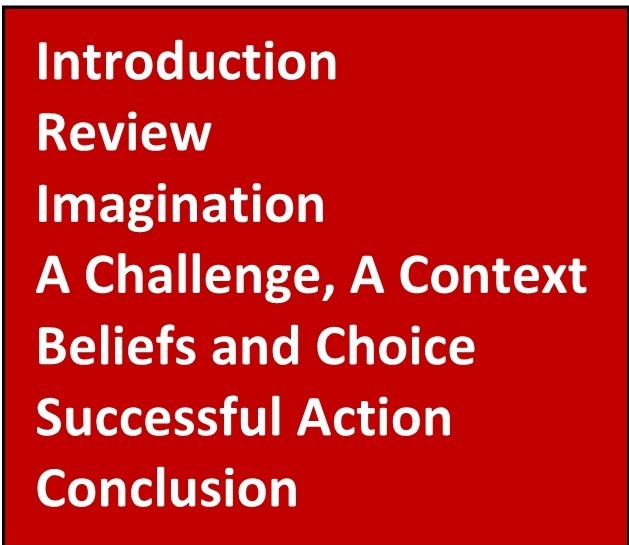Part (IV): Techniques for Creating Your Future and Your Present Moment,
Putting Self Psychology and Quantum Physics to Work
Quantum Physics to Work
INTRODUCTION
Our journey started with the science of quantum physics. We explored some profound principals that can guide us as we create two crucial aspects of our life, the future and the present moment. We used the analogy of a factory (the “future factory”) to help us understand how we create the future. We have been discovering and exploring the intersection of quantum physics, self-psychology, and metaphysics. This intersection is unfamiliar territory and can feel uncomfortable but the fruits of this exploration are invaluable. (See October/November, December (2018), and January (2019) Letters.) This letter will be the final in this series. As we explore the tools that we use for creating our future and the present moment, our focus here is on technique (practices) and on the self-psychology aspect of creating. Though our discussions have seemed complicated at times, when we approach our creating with a particular technique things do not seem so complex. Though the techniques may even seem simple, we should not underestimate their power.
REVIEW
We said that the present moment is created when we “observe” a wave of potential and probability that come to us from our future. The components of observing are belief, choice, valuing, attention, intention, imagination, and expectation. We said that our future is created by our desire and by the beliefs, thoughts, feelings, and expectations that accompany, shape, and form our desires.
Though we used the analogy of a factory to understand the process of creating our future, there is something real that is happening that we do not presently understand. Our imaginary future factory takes our orders for what we want and delivers them for us to receive. Our desires are the orders that register with the future factory that sends out the waves of potential and probability that come to us. We turn these waves into our present moment, the now that we live in.
Let’s start with imagination as we search for some specific techniques for creating what we want in our life.
IMAGINATION
Whenever we are thinking about our future we are using our imagination to create pictures (images) of things that have not happened yet. These images may be vivid or vague, may or may not have detailed word descriptions, and always have feelings contained within them. The feelings can be pleasurable, painful, or a combination of pleasure and pain at the same time.
Practice: Sit quietly, close your eyes, and imagine something that you want, feeling the most intense pleasurable feelings you can imagine. These feelings can be happiness, joy, gratitude, or excitement for example. Create a picture of yourself already having what you want. For example, picture yourself sitting at a new desk at the new job that you want feeling happy and excited that you are there. A suggestion is to sit doing this visualization for 33 seconds. This period of time allows for the building of intense feeling and ends at the maximum time we can hold an image with intense positive feeling. You can experiment to determine other time periods that may work better for you but you want to stop at the peak of feeling the positive feelings. At the end of the 33 seconds let the image go. You have sent a powerful desire to the future factory. Exactly what you imagine may appear, or something that contains the essence and the feeling of what you want may come to you.
Practice: You are looking forward (looking into the future) to an upcoming event. Imagine yourself looking back on the event saying how wonderful it was, how great it was, or how you got exactly what you wanted. Feel happy and grateful with a sense of celebrating.
You can use this throughout the day to set up a future that you want. Examples of this would be:
- Going into a meeting
- Going on a vacation
- Going for a night out
- Finding a bargain when you go shopping
- Having a successful phone conversation with a client, family member, or friend
- Going to a party with the desire of meeting new people
Practice: Use affirmations to create the approach you want to take for an upcoming event. Using the word now brings the future into the present moment, a moment you then can carry forward. For example:
- I now feel confident as I ask my boss for a raise.
- I now feel excited as I think about the date I have tonight.
- I now feel happy as I think about the dinner I am planning for my family.
- I now feel gratitude for the visit I will have with friends this evening.
Setting goals is a way of creating and shaping a future that you want.
Practice: Set goals by identifying what you want in the future and by developing a specific “action plan” to achieve these goals.
A word about the art and science of goal setting. The science and effectiveness of goal setting lies in being specific in what you want and how you will achieve it. The art of goal setting lies in determining whether to be persistent or flexible; persistent in the pursuit of a goal, or flexible in changing the goal or the way we hope to accomplish the goal. State the affirmation, “I now know when to persist and when to be flexible in my goal setting and in the pursuit of my goals.”
A CHALLENGE
Here is a way to create a context and structure to our approach for the creation of our future and present moments. We call it a challenge because it is useful yet very challenging. There are three parts to the challenge. (The challenge is fully discussed in chapter three of The Operating Manual for the Self.)
- Think about every thought that you have. This asks you to be aware of your thinking, to pay attention to what you think, and to think about the thoughts you are having. Within the context of our current discussion, remember that every thought carries a desire that shapes our future.
Practice: Consider what future a particular thought is creating for you. Ask, “Where am I heading with this thought? What is the desire I am stating?” If you don’t like where this thought is taking you, change it by identifying an alternative thought. Then say no to the thought you don’t like, and yes to the thought you like. For example, state, “I now say no, I will no longer think that I will get unbearably hurt as I love my partner.” Then state, “I now say yes, as I love my partner there will be times when my feelings get hurt. But I can cope with my feelings getting hurt.” Repeat this process until the new thought becomes automatic. No and yes can be powerful words.
Here is another practice that is a bit more complicated.
Practice: Decide what kind of thought you are having. Is it a belief, choice, value, intention, imagining, expectation, desire, or a group of thoughts indicating that you are paying attention to something? After identifying the kind of thought you are thinking, you can then be more specific as you develop a substitute thought.
For example, I have made a mistake at work. I am expecting to get fired from my job even though the mistake is not very serious. Ask yourself, “Is my expectation reasonable?” If the answer is no state, “Getting fired is a possibility but a more reasonable expectation is that I will receive some kind of reprimand that I can easily cope with.”
- Seek to feel good all the time. We can seek, can desire, to feel good all the time knowing that our feelings are important components of the future and the present moment we are creating. Actually, we can’t feel good all the time, but as we seek to feel good we can identify what needs changing. We then make those changes. Let’s say that you feel angry, for example. If you want to, intend to, hold onto that anger the future factory will send you opportunities to feel angry. Instead, understand why you feel angry and address what is causing the anger. State, “I desire to be free of my anger. I now seek to understand the cause of my anger and to resolve my anger by eliminating the cause.” The future factory helps you to accomplish this desire.
In seeking to feel good we may simply need to identify the thoughts that accompany and trigger painful feelings. We can then change the thoughts. Changing the thoughts may be easy or complicated depending on the beliefs that are involved. For example, my family member is late in coming home and I start to worry thinking that something terrible has happened. If I believe that this person is careful and responsible I can easily change this feeling by reassuring myself that he or she will be ok. If I belief that he or she is careless and irresponsible I may not be able to change that thought and feeling.
Practice: Sit comfortably and remember getting something you want. Remember how you felt when you received the fulfillment of that desire. Focus on the good feeling of that. Experience and enjoy the good feeling. This process sends the desire to repeat that experience, or something like it, to the future factory.
- Give and receive only love. This means to give and receive only love. Yes, easier said than done. This is an ideal, not something we can actually do every minute of the day. As an ideal it gives us something to strive for and in the striving we send out a desire to the future factory for help in living up to this ideal.
Practice: Investigate what love is and decide what you need to do to love. Put your understanding into practice. Giving love creates more opportunities to love if that is your desire. (See The Operating Manual for the Self page 92-93, for an amazing way to practice love.)
Receiving only love is a huge challenge. You can always receive love from yourself and from the transcendent—God, Goddess, Allah, Source, the Universe, soul, spirit, Jesus, or the Buddha, for example. Receiving and living in this love helps you be in a space of love so that when “not love” comes your way it affects you less.
How can you receive love when someone is mistreating you? The first step is to protect yourself in some way. Then there is seeing the people in your life differently so that you don’t take being mistreated by them as personally as you might. We need to understand deeper levels of motivation, our own and others, and focus on those motivations rather than on the behavior. Yes quite a challenge, especially in a moment of being mistreated.
BELIEFS AND CHOICE
As we have said, work with your beliefs and choice.
Practice: Choose your beliefs with awareness, appreciating the fundamental role of beliefs in creating your future and present moment.
(See the Letters about belief and choice. Follow this link and scroll down. https://iifsd.org/library/newsletters/ )
SUCCESSFUL ACTION
Practice: Taking action brings a potential into our life. In contemplating an action ask, “What is the probability that my action will get the desired result?” High probability of success—act on the idea. Low probability of success—pass.
CONCLUSION
Techniques that apply the principles of quantum physics, self-psychology, and metaphysics can be life changing if you work with them. Just know that this kind of change invokes resistance, the reason why we should not move ahead. You can use the techniques to have fun and to experiment. Be patient with yourself, see your life as a work in progress, and have fun.

